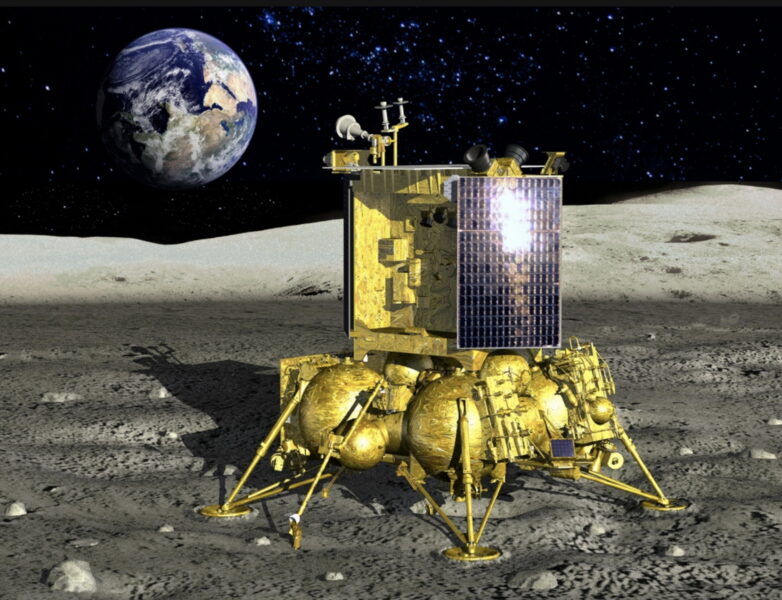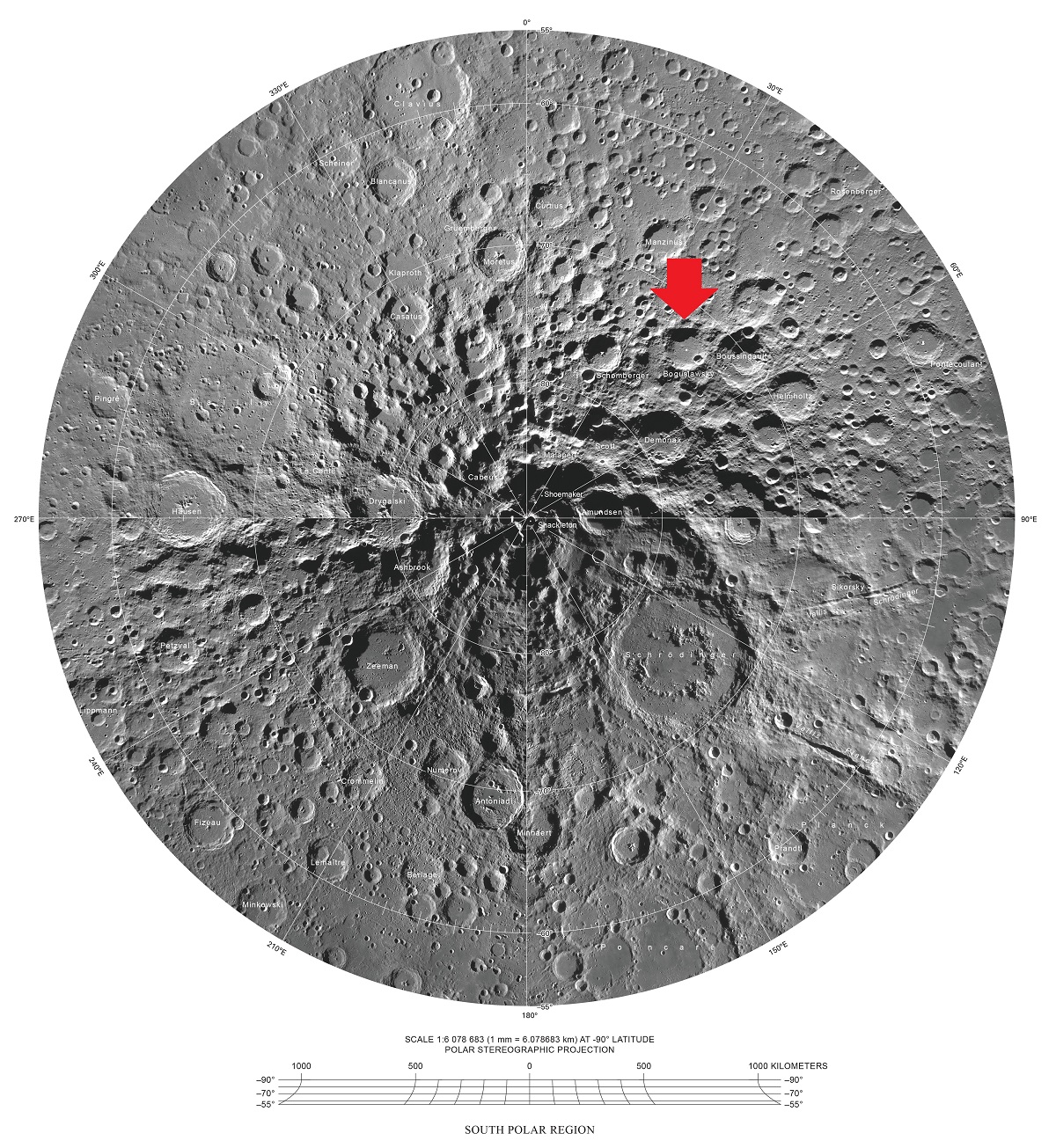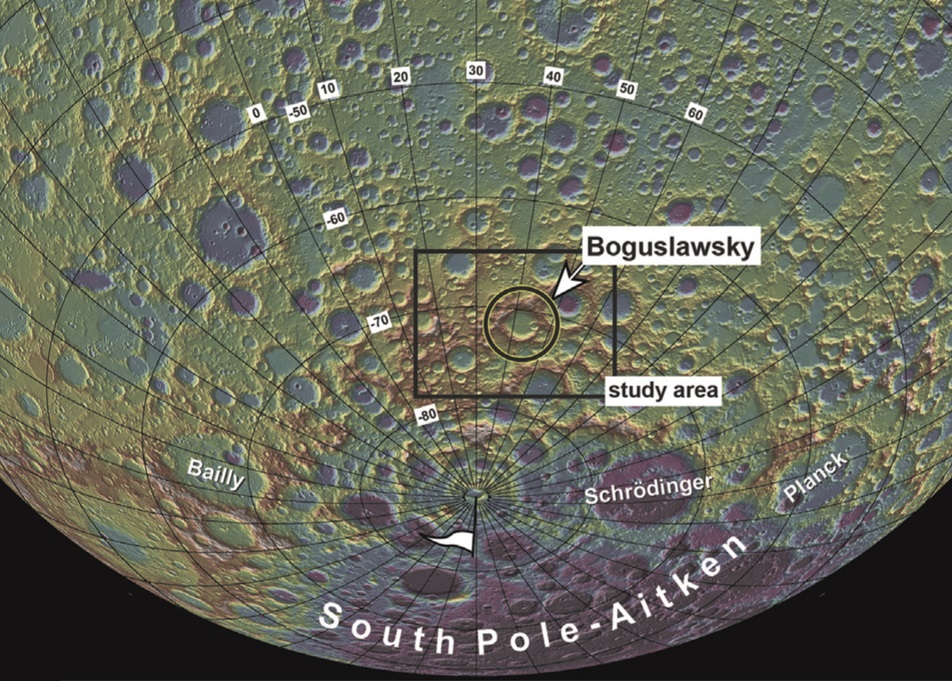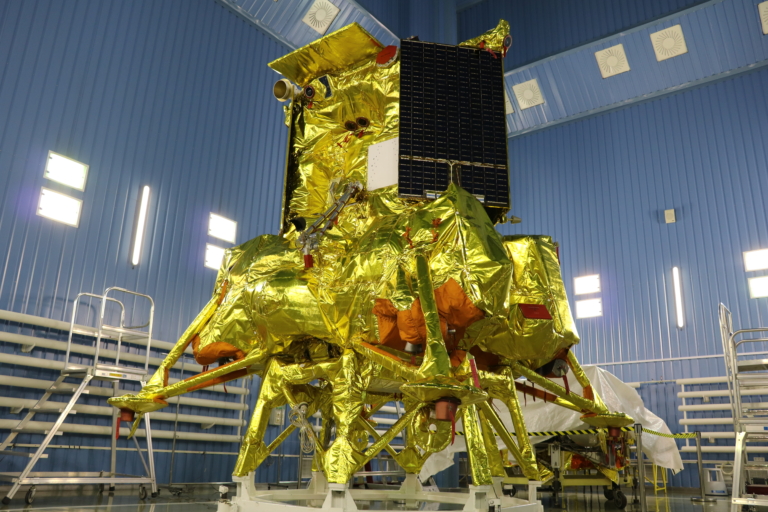The launch of Russia’s Luna 25 lander heralds the nation’s return to lunar and planetary exploration.

NASA / NPO / Lavochkin
Updates:
Monday, August 21st: Roscosmos reports that contact was lost with Luna 25 shortly after entering lunar orbit this past weekend, and the spacecraft impacted the surface at an as-of-yet undetermined location, terminating the mission. The mission did return a single ‘spacecraft selfie’ and a single image of Zeeman crater before contact was lost. The cause of the failure is under investigation. Perhaps, NASA’s Lunar Reconnaissance Orbiter will image the impact site, once known.
After more than four decades, Russia has re-entered its bid to explore the Moon, with the launch this week of Luna 25 (Luna-Glob).
The launch occurred from the new Vostochny Cosmodrome in remote eastern Russia on Friday, August 11th at 8:10 AM local time, August 10th at 23:10 Universal Time (UT). The launch included a Soyuz 2.1b rocket with a Fregat-M upper kick-stage, a standard configuration for Russian interplanetary missions. If successful, Luna 25 could become Russia’s first lunar/planetary mission to complete its task since the Soviet Union's fall in 1991.
While there were early rumors that 13 smallsat payloads would accompany Luna 25 to space, there has been no confirmation they are indeed aboard at launch.
The mission is expected to land at the Boguslawsky Crater in the lunar south pole region. Two nearby sites are also on the backup list: nearby Manzinus and Pentland craters. Landing may occur as early as late August, before the ISRO’s Chandrayaan 3 landing on August 23rd (also landing near Manzinus crater), making Luna 25 potentially the first mission to land at the lunar south pole region. NASA’s Lunar Reconnaissance Orbiter (LRO) provided input into the landing site selection early on in the mission-planning phase.

USGS

ASU / LROC / Ivanov et al 2015
“I emphasize that the device (Luna 25) will not just land where no one has landed, and where there are interesting areas with a high content of water ice and volatile compounds,” says Litvak in the recent press release (translated). “The main thing is to fully explore these areas. To do this, a self-consistent set of scientific instruments was selected on Luna 25.”
Built by NPO Lavochkina for Roscosmos, the four-legged Luna 25 carries eight instruments for surface operations, including neutron, infrared, gamma-ray, and mass spectrometers for examining lunar regolith scooped up by the lander's 1.6-meter (5.2-foot) robotic arm. Other instruments and experiments include a laser retro-reflector and a detector to measure dust in the tenuous lunar exosphere.
Among other scientific goals, these instruments could provide additional evidence for the existence of lunar water ice in the polar regions. Researchers announced evidence of lunar water ice near the poles in 2018, based on observations from India’s Chandrayaan 1 orbiter and NASA’s LRO.
Luna 25 is expected to operate for one year. Though the lander and its primary instruments are solar-powered, the lander also includes a small plutonium-fueled radioisotope thermo-electric generator to get it through the cold lunar nights.
Luna 25: A Return for Roscosmos
Luna 25 represents the first Russian mission to the Moon since the Soviet Union’s Luna 24 lander and sample return mission in 1976. The Soviet space program had a long tradition of lunar exploration, going all the way back to the first lunar flyby of Luna 1 in January 1959. But after the collapse of the Soviet Union, the program slowed significantly, with its share of stumbles. The Mars 96 mission (the country's only lunar or planetary probe in the 1990s) failed to leave Earth orbit. Then the Phobos-Grunt mission intended for the Martian moon Phobos failed in 2011.
A lack of funding has contributed to these missteps: Roscosmos operates on a shoestring budget compared with other international space organizations, and most funding goes toward its human spaceflight program, namely keeping cosmonauts on the International Space Station.
More recently, the Russia-Ukraine war has played a significant role, too. Roscosmos had prioritized the Soyuz launch vehicle and Kazachok landing platform for the ExoMars mission, but war led the European Space Agency (ESA) to part ways with Roscosmos. That split also led the ESA to not provide a planned camera to aid a pinpoint lunar landing for Luna 25.
Given this history, it’s perhaps not surprising that Luna 25 has had a troubled path leading to the launch pad. The first design was proposed in the late 1990s, though the concept that just launched wasn't conceived until after 2011. The launch itself also experienced years of delays.
“Almost half a century has passed since our last mission to the Moon,” says Maxim Litvak (Russian Academy of Sciences) in a recent press release (translated). “During this time, several generations of engineers have changed. So a full-fledged experience is lost, and not only with us.”

Roscosmos
Roscosmos’ future lunar plans include the Luna 26 lunar orbiter; the Luna 27 lander, equipped with a with drilling rig; and the Lunar 28 sample return. All of these missions are planned for the coming decade.
 1
1
Comments
Michal
August 19, 2023 at 5:51 pm
or not.
You must be logged in to post a comment.
You must be logged in to post a comment.